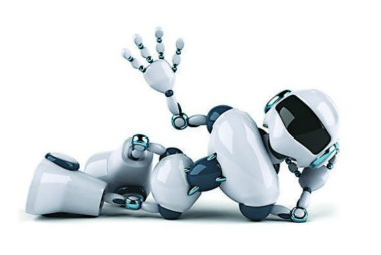This is AV1, an avatar that represents a child who is recovering from a long-term illness and cannot go to school.
这是AV1,一个替身机器人,用来代替因长期疾病而不能去学校的孩子去上学。
The robot is carrying between classes by the child's friends and is placed on the desk where the child usually sits.
生病孩子的朋友们会在上课时带着这个机器人,把它放在小伙伴座位的桌上。
It was developed by a Norwegian firm appropriately called No Isolation.
这个机器人是一家挪威的公司开发的,该公司还有一个十分适合的名字--不再孤独。
"So it sits at the child's desk in the classroom and the child uses a tablet or a phone to start it, control its movement with touch, talk through it; so it's the eyes and the ears and the voice at school,"
"课堂上,这个机器人会坐在小朋友的桌子上,小朋友可以使用平板或者手机来启动它,只需轻点就能够控制它的行动、用它来说话。所以这个机器人可以说是小朋友在学校里的眼睛、耳朵和嘴巴。"
From home or a hospital bed, the recovering child can also participate in class.
就算是在家或是医院的床上,康复中的小朋友也能参与到课堂当中。

"It has speakers and microphones and cameras,and when the child speaks at home or in the hospital to his iPad it just comes out."
"机器人搭载有扬声器、话筒、摄像头,当小朋友在家或医院里通过他的iPad说话时,机器人就能够发出声音。"
The avatar was designed to be resilient - water resistant and tough enough to withstand a fall from a desk. Inside AV1 is a small computer.
这个替身机器人设计得十分耐用--具有防水功能,具有能够承受从桌上跌落的防摔功能。在AV1的内部还有一台小型计算机。
"And it's connected to the phone network 4G and that is connected to a small card that controls the robot."
"计算机可以连到手机的4G网络,并通过一个小芯片来控制机器人。"
There's a reason for its size and slightly humanoid appearance.
AV1机器人的大小和略仿人类外观设计的原因之一在于:
"It can't be just a tiny camera because the other kids can't pick it up and take it with them. This is supposed to be their friends."
"我们不能仅仅把它设计成一台小摄像机,因为其他的孩子需要把它拿起来、带在身边。AV1应该像他们的朋友一样。"
The robot just became available to the public, helping some children feel a lot less lonely.
这款机器人刚刚问市,公司希望能够帮助孩子们减轻一些孤独感。


